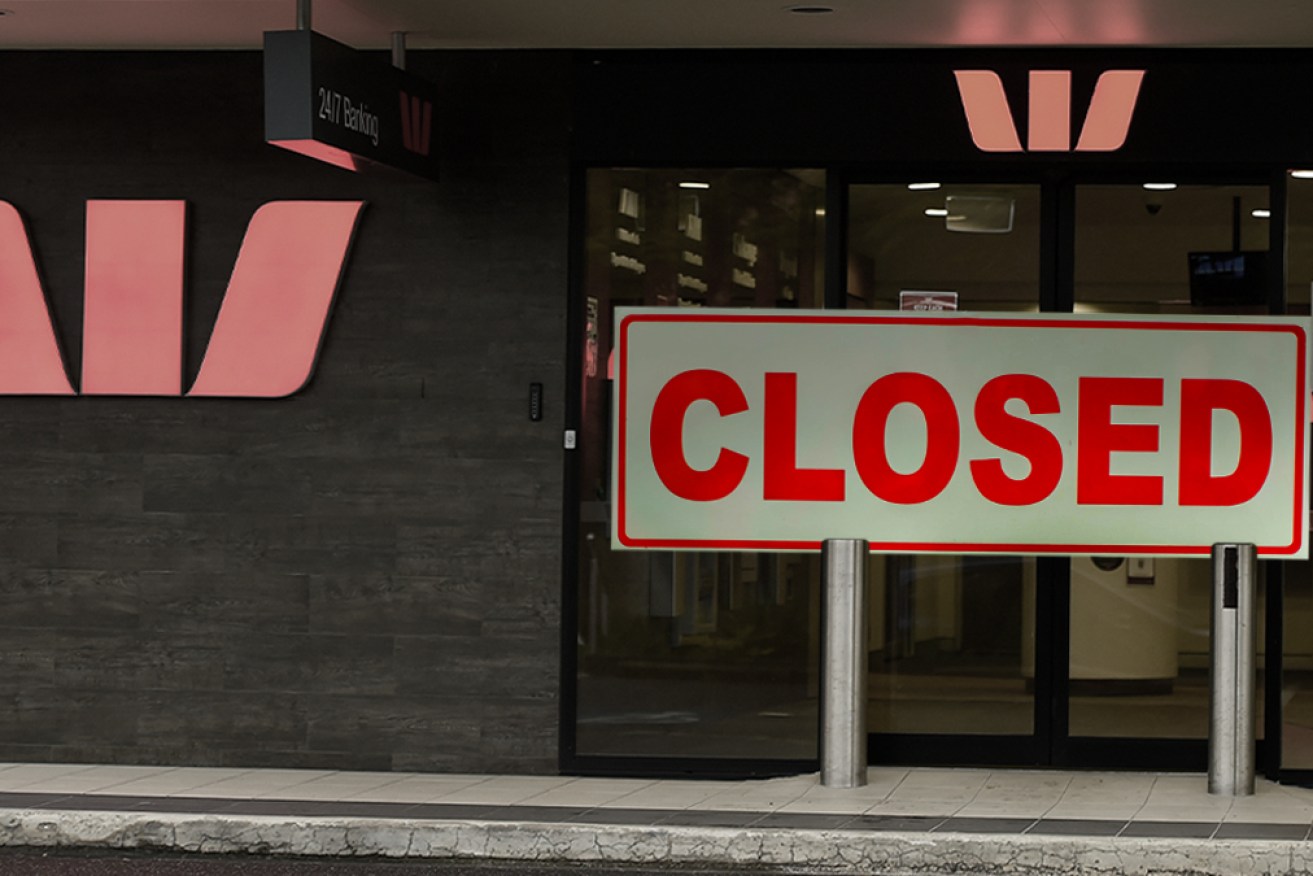‘Devastating’ branch closures in dozens of towns across Australia, as bank profits rise


Westpac is closing dozens of branches in rural areas, causing major inconvenience for country residents. Photo: AAP/Getty/TND
Regional towns have lost more than 200 bank branches over the past two years, leaving local communities in the lurch.
Westpac will close its branch in Western Australian mining town Tom Price on December 16.
This means the town will lose its last bank.
Customers who need to do face-to-face banking business will have to drive up to five hours to Port Hedland or Karratha, and lose a whole day and a full tank of increasingly expensive petrol for a trip to the bank.
The Shire of Ashburton advised The New Daily this development will hit Tom Price’s local community groups and businesses particularly hard, because they often deal with large amounts of cash.
Although banking through Australia Post is often touted as the best replacement of bank branches, the spokesperson said the local post office doesn’t offer the business services needed for large amounts of cash, and internet banking isn’t a realistic alternative.
“Our community members, community groups and sports groups, they really use the bank in ways that can’t be done online,” the shire spokesperson said.
On Monday, Tom Price’s businesses and community groups will discuss whether to open a community bank to fill the gap caused by the closure of the Westpac branch.
Regional banking report rubbished
A massive 64 per cent of bank branches in regional Australia have closed since 1975, journalist Dale Webster found through independent research.
Regional Australia lost 226 banks over the past two years alone, with 589 towns that once had bank branches now having none, and another 84 towns left with only one bank branch, Webster said.
The mass exodus does not look like slowing down.
In September, Westpac notified the Finance Sector Union it will close 24 branches, including Tom Price. These cuts add to the 68 branch closures Westpac announced over the previous two months.
Finance Sector Union national secretary Julia Angrisano supported calls for a moratorium on regional bank closures.
The final Regional Banking Taskforce report released last week needs to be “pulped” in favour of a new, more independent inquiry, Ms Angrisano said.
The taskforce, run by major banks including ANZ and Westpac, banking associations and Australia Post, assessed how bank branch closures affected local businesses, industries and communities.
Banks should ‘consider options to keep the branch open’ when closing a branch that is the last bank in town, the taskforce stated.
However, most of the report’s recommendations strongly advocated for the increased role of Australia Post banking services in regional areas, instead of bank branches.
“It’s not surprising that this report fails local communities and the staff who work in regional branches. Not one of the recommendations will stop a branch from closing its doors,” Ms Angrisano said.
“The report says that better consultation once a decision has been made to close a bank branch is a fix to this crisis. This will do nothing at all to slow down and stop the rate of closures across regional Australia.”
Banks cut costs while profits rise
Ms Angrisano said bank branch closures have a “devastating” effect on small towns and regional centres.
“Older people who are not computer literate feel the impact most as they are forced to travel longer distances to do banking over the counter,” she said.
“Closure of branches can impact farmers and local businesses, which are used to applying for loans and overdrafts at local branches.”
Debra Charlton, chair of NSW Farmers Rural Affairs committee, told TND the average age of farmers, which the Australian Bureau of Statistics found to be 58 years old in 2018-19, means internet banking is not a solid alternative, especially with regional Australia’s spotty internet coverage.
“I honestly believe it’s just cost cutting … [banks are] trying to push us to go online,” she said.
“And that’s fine in a situation where you’ve got good connectivity, or a branch not far away that you can then go to, but for rural and regional New South Wales, that’s a big loss because we don’t have the connectivity out here to be able to do a lot of our banking or business structure establishment online. It’s got to be done physically.”
The taskforce report acknowledged regional branch closures are a ‘commercial’ decision by banks, many of which are determined to shed billions in costs over the next few years.
Westpac intends to cut $8 billion in costs by 2024, and ANZ only recently abandoned its goal to trim expenses by almost $1 billion at the end of 2023.
Sarah Stanley, president of Western Australia’s Shire of Collie (which will soon lose a Westpac branch), said the excuses given by banks for the need to close branches don’t hold up given they are set to profit from rising interest rates.
“Particularly in an era where interest rates are going up, so they would say their profit margins are starting to improve, the rationale for needing to cut costs right at this moment isn’t strong,” Ms Stanley said.
“It’s important that [banks] also give back to those communities and they understand that their customer base is very broad and has very different needs. They need to continue to service those customers.”








